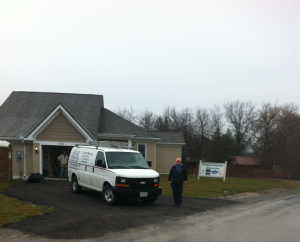Over the years I have had customers call me with a residential electrical problem. The problem may be a light that isn’t working or a receptacle that doesn’t work , maybe even a breaker that continues to trip. Trying to trouble shoot these problems can be time consuming and expensive. One of the first places an electrician may go is to the fuse box or breaker panel. The problem is exacerbated when you find the circuit directories are not filled or not filled out in a useful manner. The breaker panel directories are often very small which makes it very difficult to enter any useful information such as “bedroom receptacles”. Identifying which breaker or fuse services which light or receptacle can take time and labour $$$$. If it is a light fixture for example that fails I may have to run up and down the stairs to the breaker panel to find out the correct breaker to shut off to make a repair. If there are two circuits servicing the faulted fixture you will be looking for two breakers! Very time consuming if the panel has 40-60 breakers. OK, how do we service the faulted light fixture without costing money? SHUT THE MAIN BREAKER AND WORK IN THE DARK. Depending on the customer this may not go well and again is time consuming. Another method is to work live!! This is against the law and very dangerous. I have lost track of the number of DIY householders who have used this route which often results in spectacular fire works at the light fixture or at the breaker or both. Thats when I get the call and the cost is two or three time’s higher than it would have been with a proper breaker directory. It is also better to make the directory when the panel is installed or failing this the directory is created before a fault happens.
OK, how do we create a directory? If you are artistic make a rough drawing of your whole house showing ALL of the rooms and floors. Now, mark on your drawing using symbols for lights and receptacles and water heaters and furnaces etc. ( A symbol legend is advisable 😃) Once that is accomplished here is the fun part! Turn on every light in the house. If you have a very handy tool such as a polarity sensor ( sold in Home Depot, Lowes, or most hardware stores ) You can use this tool to plug into a receptacle to see if it is live. The other advantage of this little tool is it will also identify a a wire fault in the receptacle such as reverse polarity, missing neutral or ground etc. NOW, turn off breaker #1 and go around the house and identify each light fixture or receptacle that is not working putting the breaker # on your drawing. Turn breaker #1 back on. NEXT, turn off breaker #2 and repeat the process. It gets easier as you enter breaker numbers on your drawing.
What are the advantages of doing this? First cost!!! Second, as mentioned you may find a lot of wiring faults at receptacles. Third, when your daughter, wife, husband plugs a hair dryer in and the breaker trips it will be easier to identify that the toaster or some other appliance is plugged into the same circuit. This will probably save the breaker and an unnecessary service call. Four, by code you are allowed to have a maximum of 12 electrical devices on a general use circuit. This is useful if you want to add something to a circuit. It may also indicate that there are too many devices on a breaker. NOTE: A 15A breaker is only rated for a continuous load of 12A. Placing a continuous load more than 12A may stress the breaker to failure that requires replacement.

